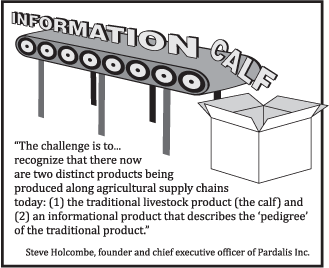WASHINGTON, July 29, 2008
-- The U.S. Department of Agriculture today issued an interim final rule for the
mandatory country of origin labeling (COOL) program that will become effective
on Sept. 30.
The rule covers muscle
cuts and ground beef (including veal), lamb, chicken, goat, and pork; perishable
agricultural commodities (fresh and frozen fruits and vegetables); macadamia
nuts; pecans; ginseng; and peanuts -- as required by the 2002 and 2008 Farm
Bills. USDA implemented the COOL program for fish and shellfish covered
commodities in October 2004.
Commodities covered under
COOL must be labeled at retail to indicate their country of origin. However,
they are excluded from mandatory COOL if they are an ingredient in a processed
food item.
USDA has also revised the
definition of a processed food item so that items derived from a covered
commodity that has undergone a physical or chemical change (e.g., cooking,
curing, smoking) or that has been combined with other covered commodities or
other substantive food components (e.g., chocolate, breading, tomato sauce) are
excluded from COOL labeling.
Food service
establishments, such as restaurants, lunchrooms, cafeterias, food stands, bars,
lounges, and similar enterprises are exempt from the mandatory country of origin
labeling requirements.
The rule outlines the
requirements for labeling covered commodities. It reduces the recordkeeping
retention requirements for suppliers and centrally-located retail records to one
year and removes the requirement to maintain records at the retail store. The
law provides for penalties for both suppliers and retailers found in violation
of the law of up to $1,000 per violation.
The rule will become
effective on Sept. 30, 2008. To allow time for covered commodities that are
already in the chain of commerce -- and for which no origin information is known
or been provided -- to clear the system, the requirements of this rule will not
apply to covered commodities produced or packaged before Sept. 30, 2008.
The rule prescribes
specific criteria that must be met for a covered commodity to bear a "United
States country of origin" declaration. In addition, the rule also contains
provisions for labeling covered commodities of foreign origin, meat products
from multiple origins, ground meat products, as well as commingled covered
commodities.
USDA plans to conduct
education and outreach activities during the six months following the rule's
effective date to help the industry comply with the law.
The full text of the
interim final rule will be published in the Aug. 1, 2008, Federal Register.
Copies of the interim
final rule and additional information can be found at:
http://www.ams.usda.gov/COOL.
 Tuesday, December 2, 2008 at 8:41AM
Tuesday, December 2, 2008 at 8:41AM 

